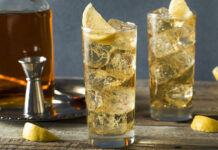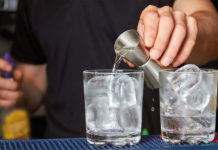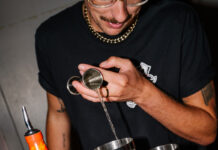As more take the low road, pubs and bars must offer options

THE growing number of consumers ordering low and no-alcohol drinks in venues is no accident.
As more and more Scots endeavour to lead healthier lifestyles, drinks firms have capitalised on the demand for lower ABV drinks, providing a range of choices for those looking to watch their alcohol intake.
“There has been a step change in people’s attitude towards these options,” said Liam Newton, vice president of marketing at Carlsberg.
“And in our most recent study, more than half of Scots agree that it has become more socially acceptable to drink an alcohol-free option in the past two years.
“In fact, the research goes on to reveal almost half of the Scottish population are actively trying to reduce their alcohol consumption and 61% of Scottish drinkers have tried a low or alcohol-free beverage.”
Alcohol-free beer offers consumers the taste profiles they love without the repercussions.
With no slow-down predicted for the category, it’s time for operators to devote more time and space to the ‘low and no’ offer in their outlets, reckons Newton.
He said: “As choice for the consumer becomes increasingly important, publicans and operators must treat their range of low or alcohol-free options with the same care and consideration of any other category, so they provide their customers with the best range of products available.”
Further evidence of the ascension of the category was highlighted by Jen Draper, marketing director at Global Brands, owner of premium soft drink brand Franklin & Sons, who agreed a solid range of ‘low and no’ options is more crucial than ever.
She said: “With the rise of the no-alcohol trend now gaining more momentum, we are seeing an increase in consumers restricting their alcohol intake, or cutting it out completely, with 5.4 million adults in the UK now abstaining from alcohol, up from 4 million in 2013.
“This is even more prominent in under 35s as a recent study found that 46% of 18 to 34 year olds said they would be likely to order a mocktail on a night out.
“However, that’s not to say that they’re not still going on nights out, visiting bars, and going to parties and celebrating with friends, meaning bars need to be able to meet the growing demand for stylish and sophisticated non-alcoholic serves.”
While the category’s credentials mark it as an increasingly important one for licensees, Jason Clarke, creative director of Genius Brewing, suggested that some pubs and bars should be reacting to demand quicker.
“It seems the on-trade has been much slower to respond to the rapid growth in healthier drinking compared to the off-trade,” he said.
“The demand is there, especially in restaurants and hotels, but establishments have been slow to communicate and promote their low and no offering, assuming that they have one.
“Venues that provide drinks menus should include a specific ‘low and no’ section which details ABV and calories. In terms of product offering, it’s important to provide range in ABV levels and in quality.”
And while choice is important across categories, nowhere is the need for such options as important as in the beer range, according to David Mee, head of sales Scotland at McEwan’s owner Marstons.
He said: “The trend is showing no sign of slowing with 65% of consumers looking to lead heathier lifestyles and with 70% of people who partake in Dry January continuing to drink less six months later.
“Alcohol-free beer is in growth as more and more consumers seek out a heathier lifestyle.
“The sector is predicted to be worth £300 million in ten years with Dry January no longer a novelty event.
“Alcohol-free beer offers consumers the taste profiles they love without the repercussions.
“With this in mind it should be utilised in key trading periods, such as lunch times and weekday evenings where soft drinks flourish.”



















